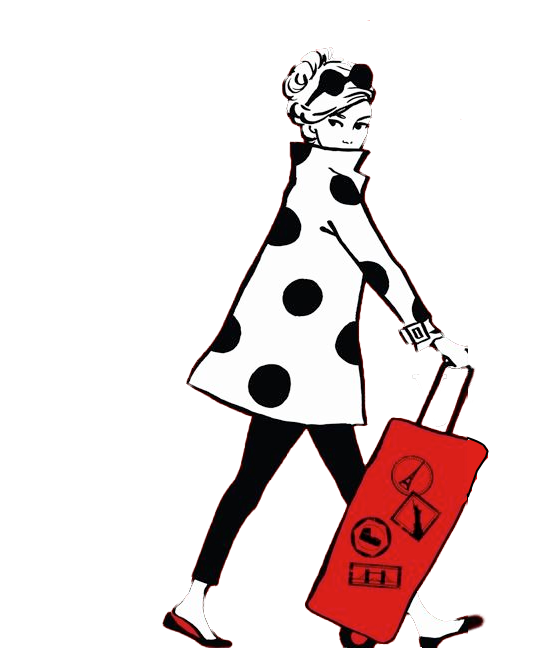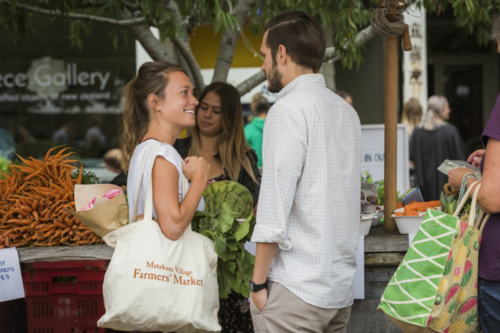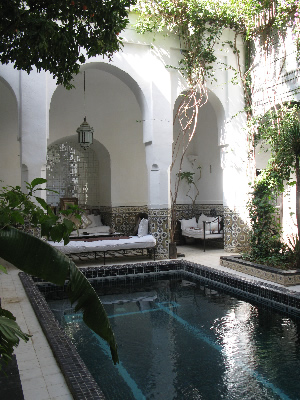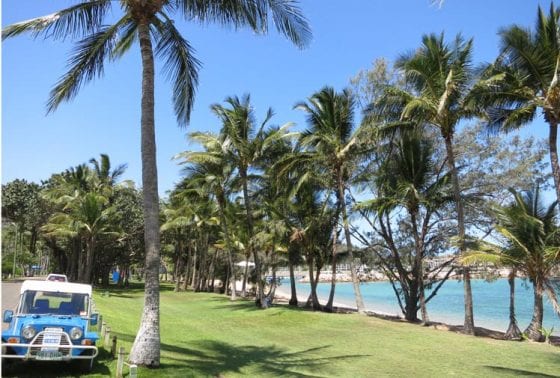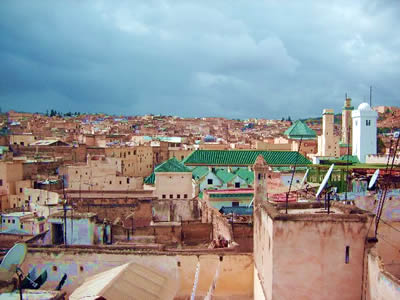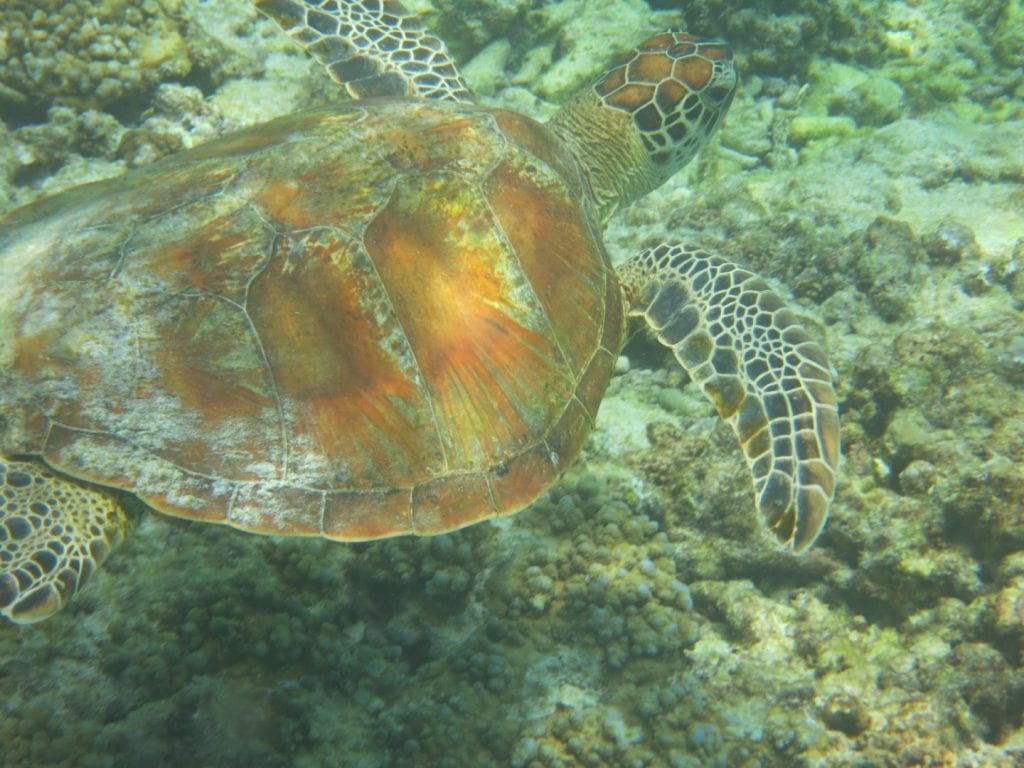 Bundaberg, in Queensland’s north, is known mainly for, well, Bundaberg Rum. Deborah Dickson Smith is in search of something more romantic. Nearby Lady Elliot Island provides.
Bundaberg, in Queensland’s north, is known mainly for, well, Bundaberg Rum. Deborah Dickson Smith is in search of something more romantic. Nearby Lady Elliot Island provides.
If you’re a Bundy-and-coke-kinda-gal then the distillery is probably worth a visit but this Goddess is more partial to liquids made from grapes. Preferably with bubbles. Nearby, however, there are a couple of attractions that in my mind are much more special, the first of which we head off to as the sun sets: Mon Repos.
Mon Repos is a protected beach a few kilometres north of Bundy and home to the largest concentration of nesting marine turtles on the eastern Australian coast.
Each night volunteers take up to 300 visitors (in small groups) along the beach to share in the experience of nesting turtles.
On the night we visit there are several big mamas along the beach, toiling up to the sand dunes to lay 80 to 100 or so eggs, bury them and cleverly disguise the nest before shuffling back down the beach. It’s an amazing sight.
You’re pretty much guaranteed a turtle sighting between November and January but if you’re really lucky (like us) you may also get to see some hatchlings emerge. And they are darlings.
 The following day we visit another nearby treasure: Lady Elliott Island. Well, I say nearby, it’s 80 kilometres off the coast but Bundy is the closest departure point.
The following day we visit another nearby treasure: Lady Elliott Island. Well, I say nearby, it’s 80 kilometres off the coast but Bundy is the closest departure point.
Lady Elliott Island lies on the outer edge, at the southern tip of the Great Barrier Reef. The continental shelf is a mere 10km to the east and the island therefore attracts large numbers of marine mega-fauna.
It’s a tiny coral atoll, decimated 100 years ago by early entrepreneurs who stripped the island bare while mining the guana produced by the 1000s of nesting seabirds.
A regeneration program has been in place for several decades now and the island’s endemic plants are thriving. This has brought the seabirds back in their 1000s. In fact, the latest estimates claim a population of 500,000 (it can be noisy – ear plugs are supplied).
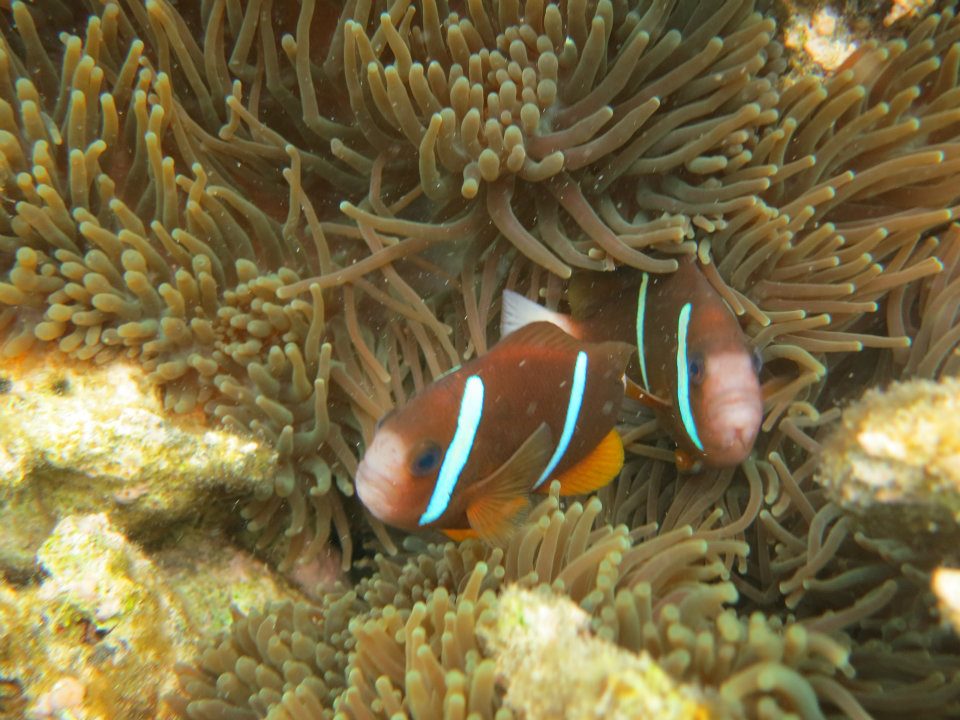 The island is surrounded by beautiful coral gardens. Here you can grab a snorkel, step off the beach and be swimming with turtles within minutes of arriving.You don’t need to be a diver to appreciate the reef here – you don’t really even need to be able to swim – it’s within paddling distance at some points.
The island is surrounded by beautiful coral gardens. Here you can grab a snorkel, step off the beach and be swimming with turtles within minutes of arriving.You don’t need to be a diver to appreciate the reef here – you don’t really even need to be able to swim – it’s within paddling distance at some points.
Swimming with these gentle, graceful creatures is a life-changing experience. I could spend hours following them around, tickling their shells and completely filling the memory card on my camera.
But wait, there’s more: further out on the reef we encounter manta rays, leopard sharks, wobbegongs, bull rays, and wrasse of all sizes and colours. The palette of colours is amazing, both the coral and the thousands of fish swimming around me.
The lagoon, sometimes too shallow for swimming, is home to a huge array of brightly coloured corals, giant clams and resident wrasse and clown fish.
When completely dived out we treat ourselves to some bubbles and nibbles and watch the sun set over the reef. It’s certainly a romantic spot.
Deborah’s first trip with her first child (at 4 months old) involved a 26 hour flight with no sleep, which is exactly when she realised travelling with kids wasn’t quite the same as without. Deborah has lived in Singapore, Kuala Lumpur, Edinburgh, London and now resides in Sydney’s northern beaches with her Brady Bunch-style family of seven – all seasoned travellers. Deb blogs at www.littlenomads.com and you can follow Deb on Twitter @deborahzoe42
